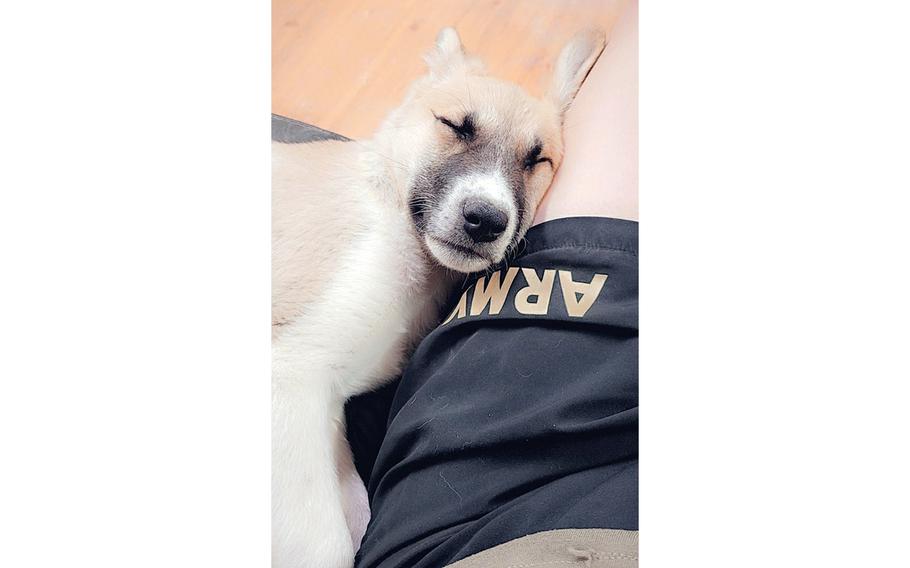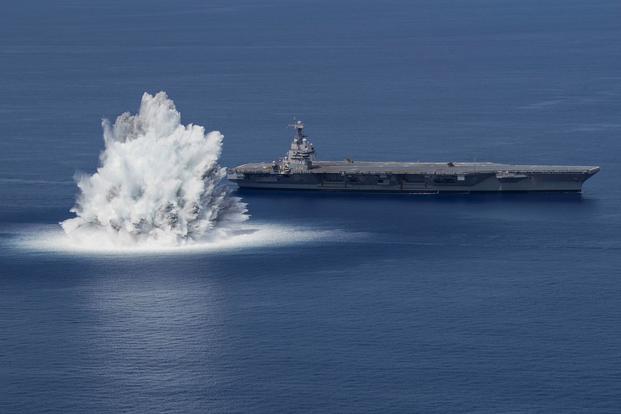Kyle Mizokami
POP MECH
JUNE 23,2021
Research shows legged vehicles would expend about as much energy as wheeled and tracked vehicles.
The study says there isn’t a power disadvantage to legged combat vehicles.
A new study from U.S. Army Research Lab (ARL) scientists reveals there’s nothing stopping the military from producing walking combat vehicles—at least from a power perspective, anyway. The research shows legs use essentially the same amount of power as wheels or tracks, so there’s no disadvantage to using them.
In the PLoS ONE study, scientists say both artificial and biological locomotion systems—literally from 1 gram to 35-ton vehicles—have approximately the same power requirements to move a unit of mass over land. Animals or machines using legs, wheels, or tracks use the same amount of energy. © Sunset Boulevard - Getty Images The ED-209 autonomous law enforcement robot from the 1987 movie Robocop.
© Sunset Boulevard - Getty Images The ED-209 autonomous law enforcement robot from the 1987 movie Robocop.
The study uses something called the Heglund Formula, which estimates the energy required for animal locomotion, as a basis. This formula shows a remarkable consistency among terrestrial animals large and small, but doesn’t cover manmade terrestrial vehicles. The study expounds on the original formula to include human-designed and -built vehicles using different types of locomotion.
So, from a power perspective, engineers now have a green light to design walking war machines up to 35 tons. (For anything above 35 tons, they’ll need a different formula.) A combat robot walking on four legs, like ED-209 from Robocop or a robot from the Gundam universe, will use about the same amount of energy to get around as an M1A2 Abrams tank.
Combat vehicles with legs have some advantages over vehicles with tracks and wheels. A legged vehicle can travel down steep hills easier, for example, or pick their way across fields of boulders or other very rough terrain. Walkers also sit higher than conventional combat vehicles, giving the operator a better field of view.
© AFP Contributor - Getty Images A new paper from U.S. Army Research lab scientists suggests walking military vehicles could someday become real.
A new paper from U.S. Army Research lab scientists suggests walking military vehicles could someday become real.
Research shows legged vehicles would expend about as much energy as wheeled and tracked vehicles.
The study says there isn’t a power disadvantage to legged combat vehicles.
A new study from U.S. Army Research Lab (ARL) scientists reveals there’s nothing stopping the military from producing walking combat vehicles—at least from a power perspective, anyway. The research shows legs use essentially the same amount of power as wheels or tracks, so there’s no disadvantage to using them.
In the PLoS ONE study, scientists say both artificial and biological locomotion systems—literally from 1 gram to 35-ton vehicles—have approximately the same power requirements to move a unit of mass over land. Animals or machines using legs, wheels, or tracks use the same amount of energy.
 © Sunset Boulevard - Getty Images The ED-209 autonomous law enforcement robot from the 1987 movie Robocop.
© Sunset Boulevard - Getty Images The ED-209 autonomous law enforcement robot from the 1987 movie Robocop.The study uses something called the Heglund Formula, which estimates the energy required for animal locomotion, as a basis. This formula shows a remarkable consistency among terrestrial animals large and small, but doesn’t cover manmade terrestrial vehicles. The study expounds on the original formula to include human-designed and -built vehicles using different types of locomotion.
So, from a power perspective, engineers now have a green light to design walking war machines up to 35 tons. (For anything above 35 tons, they’ll need a different formula.) A combat robot walking on four legs, like ED-209 from Robocop or a robot from the Gundam universe, will use about the same amount of energy to get around as an M1A2 Abrams tank.
Combat vehicles with legs have some advantages over vehicles with tracks and wheels. A legged vehicle can travel down steep hills easier, for example, or pick their way across fields of boulders or other very rough terrain. Walkers also sit higher than conventional combat vehicles, giving the operator a better field of view.

Sergei Bobylev - Getty Images Research suggests Russia’s Uran-9 combat robot would use about the same amount of energy if it had legs than the tracks shown here. Whether or not it would be practical, however, is another story.
But a combat vehicle won’t actually encounter a steep downhill or boulder-strewn path very often. A higher-sitting vehicle may offer a lofty view of the battlefield, but enemies would also spot it from farther away than a low-slung battle tank. Plus, legs concentrate the vehicle’s weight into a relatively small area, as opposed to tank tracks, making them vulnerable to getting stuck.
The principal author of the study himself discourages the idea of large combat walkers like Star Wars’s AT-AT. “I doubt practicality of large legged machines, except in highly specialized contexts,” the ARL’s Alexander Kott told Forbes.
That’s totally fine—as long as we all agree the AT-AT is a small legged machine.
But a combat vehicle won’t actually encounter a steep downhill or boulder-strewn path very often. A higher-sitting vehicle may offer a lofty view of the battlefield, but enemies would also spot it from farther away than a low-slung battle tank. Plus, legs concentrate the vehicle’s weight into a relatively small area, as opposed to tank tracks, making them vulnerable to getting stuck.
The principal author of the study himself discourages the idea of large combat walkers like Star Wars’s AT-AT. “I doubt practicality of large legged machines, except in highly specialized contexts,” the ARL’s Alexander Kott told Forbes.
That’s totally fine—as long as we all agree the AT-AT is a small legged machine.

























